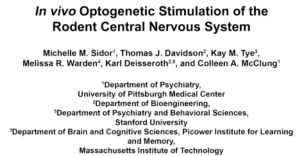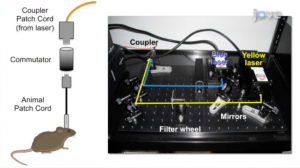The promising future of optogenetics in the field of neuroscience and the scientist who led this breakthrough research.
Historically, the functional assessment of neurons was carried out by direct stimulation of brain tissue by tiny electrodes. This technology has limited efficacy, however, due to the technical challenge of precisely placing the electrodes to achieve the desired spatial location needed to assay the neurons of interest. Recently, the advent of optogenetics, a hybrid of genetics, virology, and optics, has revolutionized the functional assessment of neurons with an incredibly high degree of spatial sensitivity. This technology enables modulation of specific types of neurons with bursts of light to control a subject’s behavior.
Another limitation of the traditional assessment of neuron function by electrodes is the lack of temporal precision. Such assessments can take hours or even days to alter gene function. It is important, however, for researchers to assay changes in genes in much smaller time scales to make accurate causal connections between neuronal function and various behavioral readouts. Optogenetics solves this problem, by providing the millisecond temporal precision needed to link neuron function to rapidly changing behavioral patterns. This technology allows neuroscientists to parse incredibly complex arrays of neuronal circuits to determine the function of each circuit.

The era of optogenetics began in 2005, when Karl Deisseroth at Stanford and his then-postdoc Ed Boyden transfected light-sensitive channel from green algae, called channelrhodopsin-2, into primary neuron cultures. Deisseroth then treated the cells with a pulse of blue light, causing the exogenous channels to open and polarize the neurons. In the years following his discovery, Deisseroth has disseminated the technique to thousands of labs throughout the world. In 2015, Dr. Deisseroth published the use of his technique in rodents at JoVE.

Although optogenetic tools were initially implemented in cell cultures and mice, the technique has now been adapted for use in several more model organisms such as rats, birds, and primates. Application of optogenetic technique is also expanding in a variety of implementations and uses, all of which are highly technical and require a great deal of instruction and practice to master.

From a clinical perspective, optogenetics promises to revolutionize our understanding of how the nervous system functions at the cellular, tissue, and organ level, ultimately offering new hope for treatment of neurological disorders. Optogenetics-driven research has already led to discoveries in many neurological and psychiatric disorders including Parkinson’s disease, epilepsy, autism, schizophrenia, anxiety, addiction, and depression.



